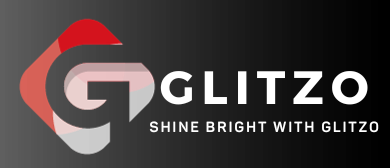Introduction:
In today’s fast-paced and highly competitive business landscape, protecting your intellectual property is of utmost importance. One aspect of intellectual property protection that often requires attention is trademark infringement. Trademarks serve as valuable assets for businesses, representing their brands and distinguishing them from competitors. However, unauthorized use or misuse of trademarks can lead to significant financial losses and reputational damage. In this blog article, we will delve into the world of trademark infringement, discussing its implications and providing practical guidance on how to safeguard your intellectual property.
Understanding Trademark Infringement:
Trademark infringement occurs when a third party uses a registered trademark without obtaining permission from the owner. Such unauthorized use can result in confusion among consumers, dilution of the brand’s distinctiveness, and unfair competition. To establish trademark infringement, certain elements must be proven, including the ownership of a valid trademark, the unauthorized use of that trademark, and a likelihood of confusion among consumers.
Protecting Your Trademark:
Safeguarding your trademark requires a proactive approach. Here are some effective strategies to protect your intellectual property:
1. Register your trademark: Registering your trademark with the appropriate government authority provides you with legal protection and exclusive rights to use the trademark in connection with your goods or services. It is essential to conduct a thorough search before filing for registration to ensure your trademark is not already in use.
2. Monitor and enforce your trademark rights: Regularly monitoring the marketplace for potential infringers is crucial. This can be done by conducting online searches, monitoring industry publications, and engaging the services of a trademark watch service. If you discover any unauthorized use of your trademark, promptly take action to enforce your rights and prevent further infringement.
3. Educate your employees and partners: Creating awareness among your employees and business partners about the importance of trademark protection is vital. Train them to recognize potential infringement issues and provide clear guidelines on the proper use of trademarks in all communication channels.
4. Police online platforms: The rise of e-commerce and social media platforms has made it easier for infringers to misuse trademarks. Regularly monitor online platforms to identify any unauthorized use of your trademark and take appropriate action, such as sending cease and desist letters or filing takedown requests.
5. Use trademark symbols and notices: Displaying the appropriate trademark symbols, such as ® for registered trademarks and ™ for unregistered trademarks, can help deter potential infringers and reinforce your ownership rights.
Implications of Trademark Infringement:
Trademark infringement can have severe consequences for businesses. Let’s explore some of the potential implications:
1. Financial losses: Unauthorized use of your trademark by a competitor or other party can result in lost sales, as consumers may be confused about the source of the goods or services. This can significantly impact your bottom line and market share.
2. Damage to brand reputation: Trademark infringement can tarnish your brand’s reputation, especially if the unauthorized use leads to substandard products or services. Consumers may associate the negative experience with your brand, leading to a loss of trust and loyalty.
3. Legal disputes and costs: Resolving trademark infringement issues often involves legal proceedings, which can be time-consuming and expensive. Legal fees, potential damages, and the diversion of resources from core business activities are all factors to consider.
4. Dilution of distinctiveness: If your trademark becomes diluted due to unauthorized use, it may lose its distinctiveness and no longer serve as a reliable indicator of your brand’s origin. This can weaken your competitive advantage and make it harder to differentiate your products or services.
Frequently Asked Questions (FAQs):
1. What should I do if I suspect trademark infringement?
If you suspect trademark infringement, gather evidence of the unauthorized use and consult with a trademark attorney. They can guide you through the process of enforcing your rights and taking appropriate legal action.
2. Can I protect my trademark internationally?
Yes, you can protect your trademark internationally by filing for trademark registration in each country where you wish to have protection. Alternatively, you can consider filing an application through the Madrid System, which provides a centralized registration process for multiple countries.
3. What is the difference between ® and ™ symbols?
The ® symbol indicates that a trademark is registered with the appropriate government authority, while the ™ symbol signifies an unregistered trademark. It is important to use the correct symbol to alert others of your trademark rights.
4. How long does trademark protection last?
Trademark protection can last indefinitely if the mark continues to be used and is renewed according to the applicable laws and regulations. However, the duration may vary depending on the jurisdiction and the type of trademark.
5. What are the alternatives to litigation in trademark infringement cases?
While litigation is often necessary to enforce trademark rights, alternative dispute resolution methods such as negotiation, mediation, or arbitration can be explored. These methods can help parties reach a resolution more efficiently and cost-effectively.
Conclusion:
Trademark infringement poses significant challenges to businesses seeking to protect their intellectual property. By understanding the implications of infringement and implementing proactive strategies, you can safeguard your trademarks and maintain a strong brand presence. Remember to stay vigilant, educate your stakeholders, and seek legal guidance when necessary. Protecting your intellectual property is an ongoing process that requires continuous monitoring and enforcement to preserve your valuable assets.
For more information on trademark infringement and protecting your intellectual property, check out these resources:
– [External Link 1]
– [External Link 2]
 glitzo Shine Bright with Glitzo
glitzo Shine Bright with Glitzo




